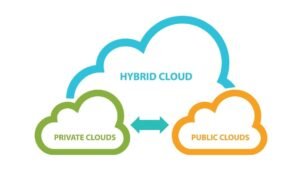In the realm of IT infrastructure, organizations face a critical decision: whether to embrace the cloud or stick with traditional on-premises solutions. Both options have their merits and downsides, and the choice depends on various factors, including the organization’s specific needs, budget, and long-term goals. In this article, we’ll explore the differences between cloud and on-premises infrastructure, helping you make an informed decision about which is right for your business.
Understanding Cloud Infrastructure
Cloud computing delivers computing services, including servers, storage, databases, networking, analytics, and more, over the internet. These services are hosted on remote servers, commonly maintained by third-party cloud providers like Amazon Web Services (AWS), Microsoft Azure, and Google Cloud Platform (GCP). Cloud infrastructure offers several advantages:
1. Scalability
Cloud services allow organizations to scale their infrastructure up or down based on demand. This elasticity is particularly useful for businesses with varying workloads or rapidly growing requirements.
2. Cost Efficiency
Cloud infrastructure often follows a pay-as-you-go model, meaning you only pay for the resources you use. This can result in cost savings compared to maintaining a fixed on-premises infrastructure.
3. Disaster Recovery
Many cloud providers offer robust disaster recovery solutions, ensuring data redundancy and high availability. This minimizes downtime in the event of hardware failures or other disasters.
4. Accessibility
Cloud infrastructure can be accessed from anywhere with an internet connection, facilitating remote work and global collaboration.
Understanding On-Premises Infrastructure
On-premises infrastructure, as the name suggests, refers to computing resources that are physically located on an organization’s premises. This includes servers, data centers, networking equipment, and storage solutions. On-premises infrastructure comes with its own set of advantages:
1. Control
Organizations have complete control over their infrastructure, allowing them to fine-tune configurations to meet specific needs and security requirements.
2. Security
For organizations with strict data security and compliance requirements, on-premises infrastructure provides enhanced control over data protection and access.
3. Predictable Costs
Unlike cloud services, where costs can vary based on usage, on-premises infrastructure costs are often more predictable, as you’ve already invested in the hardware.
4. Legacy Systems
For businesses heavily reliant on legacy systems, on-premises solutions may be necessary to maintain compatibility and operational continuity.
Factors to Consider
The decision between cloud and on-premises infrastructure depends on numerous factors:
1. Budget
Consider your budget constraints. Cloud services often require less upfront investment but can result in ongoing operational costs. On-premises solutions require significant upfront capital but may be more cost-effective in the long term.
2. Scalability
If your organization experiences varying workloads, cloud scalability may be a significant advantage. On-premises infrastructure may require overprovisioning to accommodate peak workloads.
3. Data Sensitivity
Evaluate the sensitivity of your data. Highly sensitive or regulated data may require the enhanced security and control offered by on-premises infrastructure.
4. Workforce Flexibility
Consider the needs of your workforce. Cloud infrastructure facilitates remote work and global collaboration, while on-premises solutions may require physical presence.
5. Future Growth
Assess your organization’s growth trajectory. Cloud solutions are often more agile in accommodating rapid growth, whereas on-premises infrastructure may require significant lead time for expansion.
Hybrid Solutions
In many cases, organizations opt for a hybrid approach, combining both cloud and on-premises infrastructure to meet their specific needs. This allows for flexibility, cost control, and accommodating unique requirements.
Conclusion
The decision between cloud and on-premises infrastructure is a critical one that depends on your organization’s unique needs, budget, and long-term goals. There is no one-size-fits-all answer, and many businesses find success in hybrid solutions that offer the best of both worlds. Regardless of your choice, it’s essential to conduct a thorough analysis of your requirements to make an informed decision that aligns with your business objectives.





